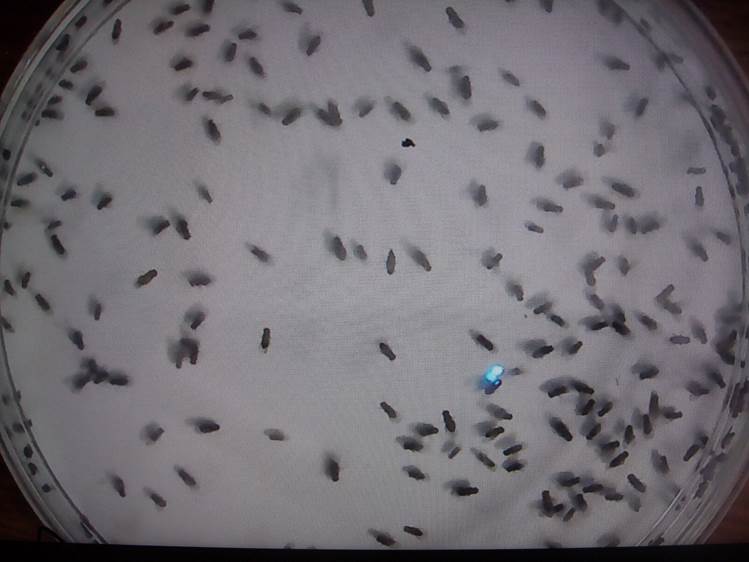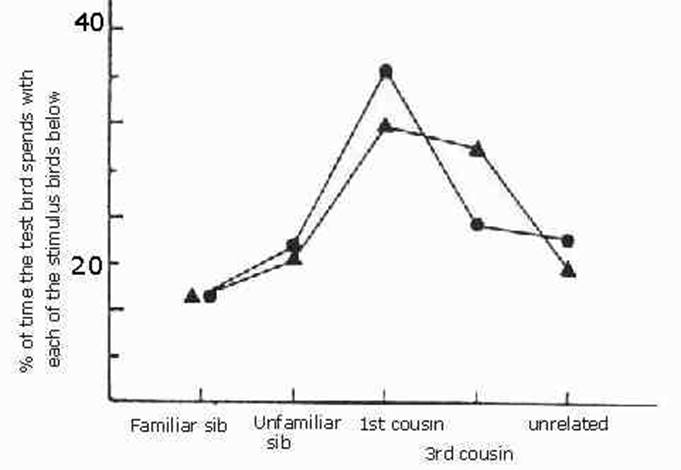
It is the 7th of April 2018. The chase is on to run down the mechanism for inbreeding depression and for what we may now call outbreeding depression. It is abundantly clear from the evidence that outbreeding depression will lead to extinction. As the renowned Professor Robin Fox said in a chapter title, “Marry in or Die Out.” (R. Fox, “Marry in or Die Out,” in Handbook on Evolution and Society (Paradigm Publishers, Boulder, 2015) p. 350.)
Patrick Bateson placed Japanese quail in cages where they could approach quail of the opposite sex visible through each window. The test bird, of either sex, and the choices were visible to each other, but different choices could not see each other. Bateson saw how much time a bird would spend near siblings from the same clutch of eggs, sibling that had been brought up together, cousins of different degree out to “unrelated,” which of course means very distantly related, birds. Here is what he found:

From Patrick Bateson Mate Choice (Cambridge University Press Cambridge 1983) One line gives the results for males being tested and the other for females.
Tragically, we have lost Bateson, but it was mentioned in his eulogy that he well understood the relationship between the preference of quail for relatives and the fertility boost this preference gave.
The preference for unfamiliar siblings over sibling nestmates is called the Westermark effect. It seems to be a defense against inbreeding, which we already know incurs a fertility penalty.
The quail follow the Sibly curve through some system of recognition even though they cannot know whether a newly met bird is a first or third cousin.
If these birds are not falling in love with relatives, they certainly are giving the appearance of doing so.